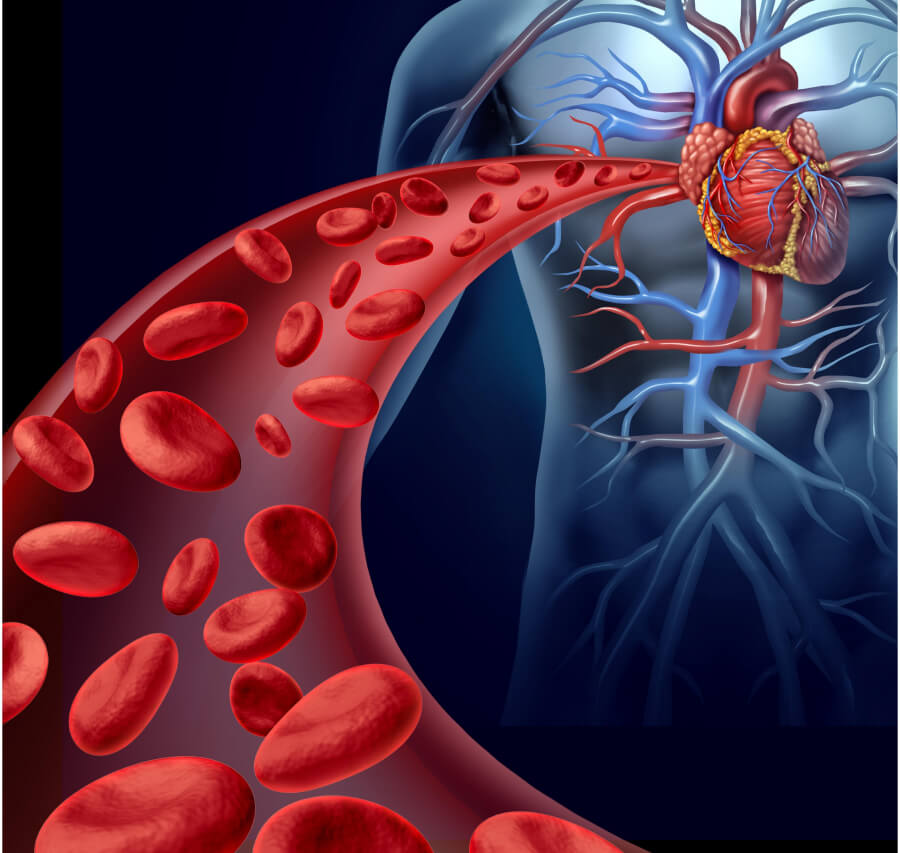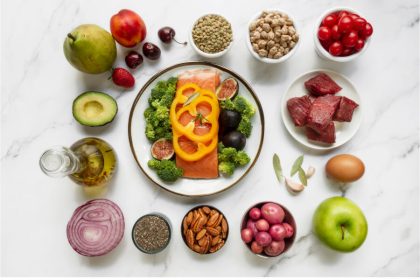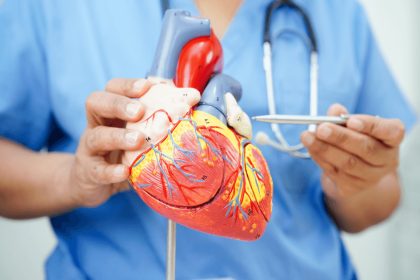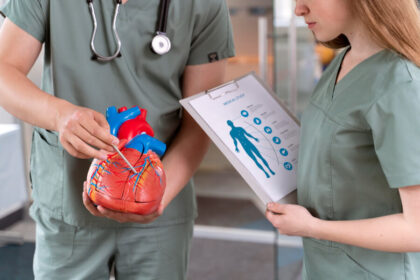Veins and arteries are two types of blood vessels that transport blood throughout your body.
They are part of your circulatory system, which also includes your heart and lungs.
Your circulatory system is responsible for delivering oxygen and nutrients to your cells, and removing waste products and carbon dioxide from them.
It also helps regulate your body temperature, blood pressure, and pH levels.
Veins and arteries have different structures, functions, and roles in your body.
Knowing the difference between them can help you understand how your blood flows, how your organs work, and how to prevent and treat common conditions that affect your veins and arteries.
In this blog post, we will explore the anatomy, function, and health of veins and arteries, and provide some tips on how to take care of them.
Anatomy of Veins and Arteries
Veins and arteries are both made up of three layers of tissue: the outer layer (tunica externa), the middle layer (tunica media), and the inner layer (tunica intima).
However, there are some differences in the thickness and composition of these layers.
The outer layer of veins and arteries is mostly composed of collagen and elastic fibers, which provide strength and flexibility to the blood vessels.
The outer layer of arteries is thicker and more rigid than the outer layer of veins, because arteries have to withstand higher blood pressure and pulsation.
The middle layer of veins and arteries is mainly composed of smooth muscle and elastic fibers, which allow the blood vessels to contract and relax.
The middle layer of arteries is thicker and more muscular than the middle layer of veins, because arteries have to control the blood flow and maintain the blood pressure.
The middle layer of veins is thinner and less muscular than the middle layer of arteries, because veins have lower blood pressure and rely on external factors to move the blood.
The inner layer of veins and arteries is the thinnest and smoothest layer, which reduces friction and prevents blood clotting.
The inner layer of veins and arteries is lined with a thin layer of cells called endothelium, which regulates the exchange of substances between the blood and the tissues.
The inner layer of veins also has valves, which are flap-like structures that prevent the backflow of blood. The inner layer of arteries does not have valves, because the blood flow in arteries is always in one direction.
Function of Veins and Arteries
Veins and arteries have different functions and roles in your body.
Veins carry blood that is low in oxygen and high in carbon dioxide from the tissues to the heart.
Arteries carry blood that is high in oxygen and low in carbon dioxide from the heart to the tissues.
Veins are also called capacitance vessels, because they can store a large amount of blood.
About 75% of your blood volume is in your veins at any given time.
Veins can expand and contract to accommodate changes in blood volume and pressure.
Veins also act as reservoirs for blood in case of blood loss or shock.
Arteries are also called resistance vessels, because they resist the flow of blood and create blood pressure.
Blood pressure is the force that the blood exerts on the walls of the arteries.
Blood pressure is essential for maintaining the blood flow and delivering oxygen and nutrients to the tissues.
Arteries also act as distributors for blood to different parts of the body.
How Veins and Arteries Work Together
Veins and arteries work together to form a closed loop of blood circulation in your body.
There are two main types of blood circulation: pulmonary circulation and systemic circulation.
Pulmonary circulation is the circulation of blood between the heart and the lungs.
It starts from the right ventricle of the heart, which pumps the blood into the pulmonary artery.
The pulmonary artery branches into smaller arteries that carry the blood to the lungs.
In the lungs, the blood exchanges carbon dioxide for oxygen through the capillaries, which are the smallest and thinnest blood vessels.
The oxygenated blood then returns to the heart through the pulmonary veins, which empty into the left atrium of the heart.
Systemic circulation is the circulation of blood between the heart and the rest of the body.
It starts from the left ventricle of the heart, which pumps the blood into the aorta.
The aorta is the largest and main artery of the body, which branches into smaller arteries that carry the blood to different organs and tissues.
In the organs and tissues, the blood delivers oxygen and nutrients and picks up waste products and carbon dioxide through the capillaries.
The deoxygenated blood then returns to the heart through the veins, which merge into the superior and inferior vena cava, which empty into the right atrium of the heart.
Health of Veins and Arteries
Veins and arteries are vital for your health and well-being.
But they can also be affected by various conditions and diseases that can impair their function and cause serious complications.
Some of the common conditions and diseases that affect veins and arteries are:
Varicose veins
These are enlarged and twisted veins that appear under the skin, usually in the legs.
They are caused by weak or damaged valves in the veins that allow the blood to pool and stretch the veins.
Varicose veins can cause pain, swelling, itching, and cosmetic problems.
They can also increase the risk of blood clots, skin ulcers, and bleeding.
Deep vein thrombosis (DVT):
This is a condition where a blood clot forms in a deep vein, usually in the leg.
It can be caused by prolonged immobility, injury, surgery, pregnancy, or certain medical conditions.
DVT can cause pain, swelling, redness, and warmth in the affected leg.
It can also lead to a life-threatening complication called pulmonary embolism.
Where the blood clot breaks off and travels to the lungs, blocking the blood flow and causing chest pain, shortness of breath, and sudden death.
Atherosclerosis
This is a condition where plaque, which is a mixture of fat, cholesterol, calcium, and other substances, builds up on the inner walls of the arteries, narrowing and hardening them.
It can be caused by high blood pressure, high cholesterol, smoking, diabetes, obesity, or genetic factors.
Atherosclerosis can reduce the blood flow and oxygen supply to the organs and tissues, causing pain, numbness, weakness, or organ damage.
It can also lead to a heart attack, stroke, or peripheral artery disease, where the blood flow to the limbs is reduced, causing pain, ulcers, or gangrene.
Aneurysm
This is a condition where a weak spot in the wall of an artery bulges out and forms a sac-like structure.
It can be caused by high blood pressure, atherosclerosis, trauma, infection, or genetic factors.
Aneurysms can occur in any artery, but they are most common in the aorta, the brain, and the legs. Aneurysms can cause pain, pressure, or pulsation in the affected area.
They can also rupture and bleed, causing shock, stroke, or death.
How to Take Care of Your Veins and Arteries
To keep your veins and arteries healthy and prevent or treat any conditions or diseases that affect them, you should:
Exercise regularly to improve your blood circulation.
Lower your blood pressure and cholesterol, and strengthen your heart and muscles.
Aim for at least 150 minutes of moderate-intensity aerobic exercise per week, such as walking, cycling, swimming, or jogging.
You can also do some strength training and stretching exercises to tone and flex your muscles and joints.
Eat a balanced and nutritious diet that is low in saturated fat
Trans fat, cholesterol, salt, and added sugar, and high in fiber, fruits, vegetables, whole grains, lean protein, and healthy fats.
This can help you maintain a healthy weight, lower your blood pressure and cholesterol, and prevent or manage diabetes.
You can also include some foods that are good for your veins and arteries, such as garlic, onion, ginger, turmeric, green tea, berries, nuts, seeds, and fish.
Drink plenty of water and fluids to keep yourself hydrated
Flush out toxins, and prevent blood clots.
Aim for at least eight glasses of water per day, and avoid or limit alcohol, caffeine, and sugary drinks, which can dehydrate you and raise your blood pressure and cholesterol.
Quit smoking and avoid exposure to secondhand smoke
Which can damage your veins and arteries, increase your blood pressure and cholesterol.
And increase your risk of atherosclerosis, heart attack, stroke, and peripheral artery disease.
Smoking can also impair the healing of wounds and ulcers caused by poor blood circulation.
If you need help to quit smoking, you can consult your doctor, join a support group, or use nicotine replacement products or medications.
Which can affect your blood pressure, heart rate, and blood flow.
Stress can also trigger unhealthy habits, such as smoking, drinking, overeating, or skipping exercise, which can harm your veins and arteries.
You can try some relaxation techniques, such as deep breathing, meditation, yoga, or massage, to calm your mind and body.
You can also seek professional help, such as counseling or therapy, if you have chronic or severe stress.
Check your blood pressure, cholesterol, and blood sugar levels regularly
Follow your doctor’s advice on how to control them.
High blood pressure, high cholesterol, and high blood sugar can damage your veins and arteries, and increase your risk of heart attack, stroke, and other complications.
You can use a home monitor, a pharmacy machine, or a doctor’s office to measure your blood pressure. You can use a blood test, a home kit, or a doctor’s office to measure your cholesterol and blood sugar levels.
Wear comfortable and supportive shoes, socks, and clothing that do not restrict your blood flow or cause irritation or injury to your skin.
Avoid wearing tight, high-heeled, or ill-fitting shoes, socks, or clothing that can compress your veins and arteries, or cause blisters, cuts, or infections.
You can also wear compression stockings or sleeves, which are specially designed to improve your blood circulation and prevent swelling, pain, and varicose veins.
Elevate your legs above your heart level when you sit or lie down, especially if you have varicose veins, swelling, or pain in your lower legs.
This can help reduce the pressure and pooling of blood in your veins, and improve the blood flow back to your heart.
You can use pillows, cushions, or a footrest to elevate your legs comfortably.
Move your legs and feet frequently, especially if you sit or stand for long periods of time, such as when you work, travel, or watch TV.
This can help prevent blood clots, cramps, and stiffness in your veins and arteries, and improve your blood circulation and muscle tone.
You can do some simple exercises, such as ankle circles, toe raises, heel drops, or leg stretches, to keep your legs and feet active and flexible.
Seek medical attention if you notice any signs or symptoms of problems with your veins and arteries.
Such as pain, swelling, redness, warmth, numbness, tingling, weakness, ulcers, or bleeding in your legs or feet.
Do not ignore or delay seeking help, as some conditions can be serious and life-threatening if left untreated.
Your doctor can diagnose and treat your condition, and prescribe medications, procedures, or surgeries if needed.
Conclusion
We hope this blog post has helped you learn more about the difference between veins and arteries, and why it matters for your health and well-being.
Veins and arteries are essential for your blood circulation, oxygen delivery, and waste removal.
They also play a role in your body temperature, blood pressure, and pH regulation.
However, veins and arteries can also be affected by various conditions and diseases that can impair their function and cause serious complications.
Therefore, it is important to take good care of your veins and arteries, and prevent or treat any issues that might arise.
FAQs
What is the main difference between veins and arteries?
Veins and arteries differ primarily in their function and structure.
Arteries carry oxygenated blood away from the heart to the body’s tissues, while veins transport deoxygenated blood back to the heart.
Arteries have thicker walls and a pulse, while veins have thinner walls and contain valves to prevent backward blood flow.
Why is understanding the difference between veins and arteries important?
Understanding the distinction between veins and arteries is crucial for grasping the circulatory system’s functioning.
It helps individuals comprehend how oxygen and nutrients are transported throughout the body and how waste products are carried away.
This knowledge is vital for maintaining cardiovascular health and preventing circulatory issues.
Do veins and arteries carry the same type of blood?
No, veins and arteries carry different types of blood.
Arteries carry oxygenated blood rich in oxygen and nutrients from the heart to the body.
While veins transport deoxygenated blood containing waste products back to the heart for oxygenation.
Can veins become arteries, and vice versa?
In general, veins do not transform into arteries or vice versa.
However, there are exceptions in certain medical procedures, such as grafting veins to serve as arteries during bypass surgery.
Natural conversion between veins and arteries does not occur under normal physiological conditions.
What are some common health issues related to veins and arteries?
Veins and arteries can be affected by various health issues.
Arterial conditions include atherosclerosis (hardening of the arteries) and aneurysms.
Venous conditions include varicose veins, deep vein thrombosis (DVT), and chronic venous insufficiency.
Understanding these conditions is essential for prevention, early detection, and appropriate treatment.
How can one promote the health of veins and arteries?
Maintaining a healthy lifestyle is crucial for promoting the well-being of veins and arteries.
This includes regular exercise to support cardiovascular health, a balanced diet low in saturated fats to prevent plaque buildup.
Avoiding smoking, managing stress, and monitoring blood pressure and cholesterol levels.
Regular check-ups with healthcare professionals can help detect and address any emerging issues.





